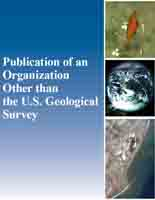Late Jurassic Independence dike swarm in eastern California
Links
- More information: Publisher Index Page (via DOI)
- Download citation as: RIS | Dublin Core
Abstract
The Independence dike swarm in eastern California, more than 250 km long, extends from the eastern Sierra Nevada and Inyo Mountains through the Argus Range, Alabama Hills, and Spangler Hills to the Garlock fault, where it is offset 64 km before continuing into the Mojave Desert. The dike swarm includes a wide variety of rock types, from lamprophyre to granite porphyry belonging to a calc-alkalic suite. U-Pb dating of three silicic dikes gives concordant ages of 148 m.y., which probably indicates the time of intrusion of the entire swarm. Analyses of rare zircons in the mafic dikes yield discordant, inordinately old ages that suggest entrainment of Pre-cambrian zircons in the dike magma at depth. The regional fracture system intruded by the dikes is believed to have been produced by a crustal extension event that occurred after the Nevadan orogeny during Late Jurassic time, when subduction beneath the Sierra Nevada foothill belt jumped westward and subduction of Franciscan rocks began along the Coast Range thrust.
Study Area
| Publication type | Article |
|---|---|
| Publication Subtype | Journal Article |
| Title | Late Jurassic Independence dike swarm in eastern California |
| Series title | Geology |
| DOI | 10.1130/0091-7613(1979)7<129:LJIDSI>2.0.CO;2 |
| Volume | 7 |
| Issue | 3 |
| Year Published | 1979 |
| Language | English |
| Publisher | GSA |
| Contributing office(s) | Volcano Science Center |
| Description | 5 p. |
| First page | 129 |
| Last page | 133 |
| Country | United States |
| State | California |
| Other Geospatial | Sierra Nevada |


